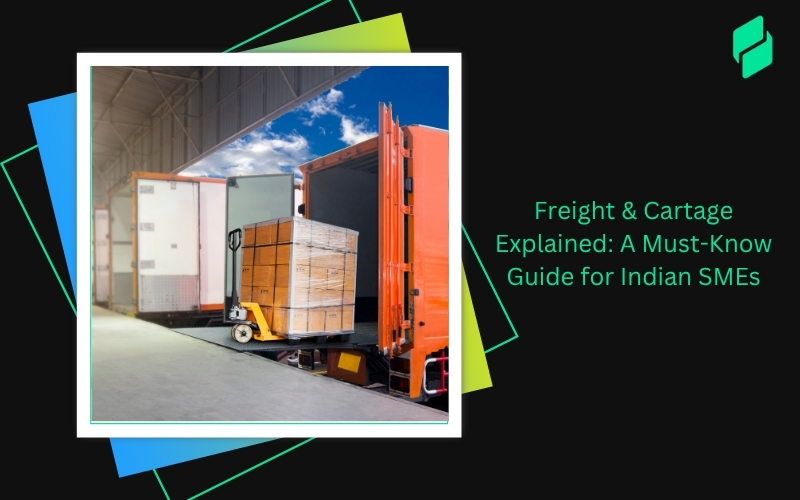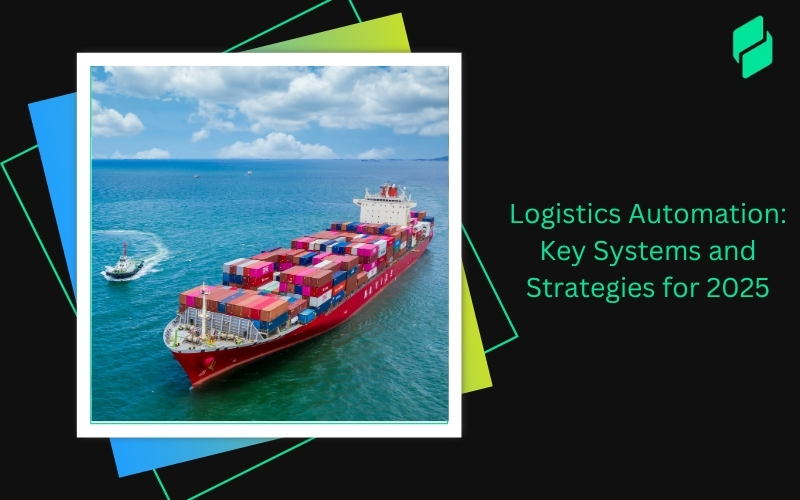Optimize your business: use unlimited savings with Pazago fulfilled now!
Get Started ->Have you ever wondered what goes into the pricing of the goods you order overseas?
Beyond the product's price and international shipping costs, there's a crucial component called inland haulage charges (IHC). These charges can significantly affect the overall cost and efficiency of shipping goods.
Let’s examine IHC charges, how they are calculated, and why they are essential for maintaining the infrastructure that keeps goods moving smoothly across countries.
What Exactly Are Inland Haulage Charges?
Inland haulage charges in shipping cover the transport of goods from a shipper's premises to the port of departure and from the destination port to the final consignee. Why are they important?
IHC ensures that the goods you’ve purchased or are sending are sent safely and on time to and from the port. This includes not only the direct costs of transportation but also the handling and management fees associated with moving goods overland.
Calculating IHC: More Than Just Distance and Weight
Thinking that the calculation of IHC charges in shipping is just about the distance covered? Think again. Several factors play into the cost.
The type and weight of the goods significantly influence these charges. For instance, perishable goods requiring refrigerated transport will incur higher IHC than non-perishable items.
Similarly, heavy or oversized items requiring special handling will also increase fees. Understanding these nuances can help you better anticipate shipping costs and manage your budget effectively.
Contributing to Better Roads and Routes
Did you know that part of the IHC you pay goes towards road improvements and highway maintenance? Yes, these charges cover the cost of transporting goods and contribute to the infrastructure that makes efficient transport possible.
By ensuring that roads and bridges are well-maintained, IHC charges help reduce the likelihood of delays caused by poor infrastructure, ultimately supporting smoother and faster delivery of goods across the supply chain.
Also Read: Understanding ACD Charges in Shipping
IHC for Operators: Navigating Licensing and Charges
Operators of heavy goods vehicles (HGVs) must understand inland haulage charges (IHC) and comply with licensing requirements.
Let's explore the licensing necessities and how IHC varies with vehicle types.
Licensing Requirements for HGV Operators
Operating HGVs requires adherence to specific licensing that covers vehicle maintenance, driver hours, and cargo handling. Ensuring compliance with these regulations is crucial for maintaining safety standards and protecting your business within the logistics sector.
Tailored IHC Rates: Understanding the Costs for Different Vehicles
Why do vehicle types matter when calculating IHC charges in shipping? Each category, from small vans to large HGVs and eco-friendly alternatives, incurs different IHCs based on fuel efficiency, road wear, and maintenance requirements.
Here’s a closer look:
- Small Vans and Light Trucks: These vehicles are often used for quicker, local deliveries within cities. Their IHC rates are generally lower due to less wear on roads and lower fuel consumption compared to larger vehicles.
- Heavy Goods Vehicles (HGVs): Large trucks and HGVs face higher IHCs due to more significant road impact, higher fuel consumption, and more stringent regulatory requirements. These vehicles are essential for long-haul transport of heavy or bulk goods but can be costly.
- Specialised Transport Vehicles: Vehicles designed for transporting hazardous materials or oversized loads often incur additional charges. These rates account for the extra precautions required to transport such materials safely and the potential for additional road wear or required escorts.
- Eco-Friendly Vehicles: Electric trucks and hybrid vehicles might benefit from reduced IHC rates in some regions as incentives for reducing environmental impact. These vehicles contribute to lower emissions and, increasingly, are being integrated into fleets to meet sustainability goals.
Also Read: What Is Wharfage? Overview & Benefits
Applicability of Inland Haulage Charges in Shipping
Understanding when inland haulage charges (IHC) apply and when they don't is crucial for effective shipping logistics and cost management.
Let's explore the scenarios where these charges are typically incurred and the exceptions that might exempt you from these fees.
When Do Inland Haulage Charges Apply?
Inland haulage charges are essential whenever goods are transported from an origin point to the port of shipment and from the destination port to the final delivery point. This fee covers moving goods over land, whether by truck, rail, or combination.
For instance, if you're importing electronics from Asia to Europe, IHC would cover the cost of moving your containers from the manufacturer's warehouse to the Asian port and then from the European port to your distribution centre.
When Are You Exempt from Inland Haulage Charges?
Interestingly, specific scenarios could exempt you from incurring IHC. These exemptions often depend on the terms of your shipping contract or the nature of the shipment itself.
For example:
- Direct Pick-up or Delivery: If goods are picked up directly from the port by the consignee's transportation means, bypassing the usual haulage services, IHC might not apply.
- Integrated Service Contracts: Some logistics service providers offer comprehensive packages that include inland transport as part of a broader service offering, sometimes at a bundled rate, which effectively 'hides' the IHC.
- Special Agreements: Special agreements can sometimes be negotiated where IHC are waived or substantially reduced, especially for regular large-volume shippers.
With Pazago, you can easily find the most cost-effective haulage solutions tailored to your cargo’s needs, including eco-friendly options.
Also Read: Understanding Freight Charges and Costs [2024 Guide]
How Are Inland Haulage Charges Determined and Collected?
Have you ever wondered who collects the inland haulage charges for your goods? Whether for export or import, IHC is typically collected by the shipping line or your freight forwarder, but the specifics can vary based on your logistics arrangements.
For Export Shipments
In export scenarios, the shipping line or the freight forwarder you’ve engaged collects IHC as part of the shipping costs.
These charges are usually settled before the goods leave their origin, ensuring that the transportation to the port of export is secured and paid for. The charge covers moving your products from their initial location to the port, ready for international shipment.
Sometimes, figuring out when IHC applies can be tricky. Pazago’s team of experts can help determine when these charges affect your shipments, ensuring clear and accurate budgeting.
For Import Shipments
Conversely, in import scenarios, IHC is collected by the shipping line or a local freight forwarder representing you at the destination.
This fee is typically paid once the goods arrive at the destination port before being transported to their final destination. It ensures that your goods are promptly moved from the port of arrival to their ultimate location within the country.
Exploring Alternatives to Inland Haulage Charges in Shipping

Looking for alternatives to reduce IHC? Consider consulting with Pazago's experts. Their comprehensive approach to global trade management can provide tailored solutions that meet your specific operational needs.
Let's uncover viable options to reduce overhead and enhance your shipping strategy.
1. Integrating Multimodal Transport Solutions
One effective strategy to bypass or reduce IHC is embracing multimodal transport solutions. Have you considered combining different modes of transport to optimise your shipping routes?
For example, using rail for longer distances from the port can be more cost-effective than road transport. Rail transport offers greater capacity and tends to have lower tariffs than road haulage over equivalent distances.
2. Leveraging Coastal Shipping
If your operations are spread along a coastline, why not consider coastal shipping as an alternative to traditional road or rail inland haulage? Coastal shipping is advantageous for efficiently moving large volumes of goods and can significantly reduce IHC.
It reduces the dependency on congested road networks and can be a more sustainable option, lowering your carbon footprint.
Also Read: Understanding Domestic Logistics and Transportation Management
3. Optimizing Logistics with In-House Capabilities
Developing in-house logistics capabilities, such as maintaining your fleet of vehicles, can also be an alternative to paying external IHC. This option gives you complete control over your haulage operations, improving efficiency and lowering costs.
However, it requires significant initial investment and ongoing management, so it’s crucial to analyse if this aligns with your long-term business objectives.
4. Partnering with Local Hauliers
Sometimes, partnering with local hauliers for the 'last mile' delivery of goods can prove more economical than standard IHC offered by major carriers.
Local hauliers often have better rates and can provide more flexible service options tailored to specific regional needs. Have you explored this avenue in your local area?
Local partnerships can be a game-changer for managing last-mile delivery costs. Pazago's network might offer the right connections to optimize and economize your haulage needs.
IHC vs. THC: Understanding Key Freight Transportation Charges
Two critical costs in shipping and logistics often puzzle many: Inland Haulage Charges (IHC) and Terminal Handling Charges (THC).
Let's delve into the nuances of IHC and THC, highlighting their roles, differences, and how they fluctuate.
Also Read: Dunnage: Its Importance, Uses, and Different Types in Shipping
Conclusion
Understanding inland haulage charges (IHC) is crucial for efficient shipping. These charges ensure the smooth transportation of goods and are essential for accurate budgeting and streamlined operations.
Engage transparently with your shipping line or freight forwarder to manage these costs effectively. To enhance your logistics efficiency, consider strategies to reduce IHC, like optimising routes or negotiating better terms.
Moreover, exploring efficient transport options is crucial for minimizing IHC. Platforms like Pazago offer seamless logistics solutions that could streamline your operations and potentially lower these costs.


.png)


%20In%20Ship.png)





